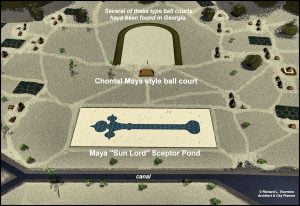The Chontal Maya or Putun Maya
The presence of crescent shaped temple mounds in the Florida Peninsula strongly suggests cultural contacts with Maya ethnic groups, who worshiped the goddess, Ixchel. Very few Florida archaeologists have been willing to suggest publicly that Florida, Mesoamerica and South America had direct cultural contacts. Those who did, were all ostracized by their peers. However, the linguistic and architectural evidence is overwhelming for contacts between illiterate Maya merchants and the indigenous peoples in Georgia – which is north of Florida.


